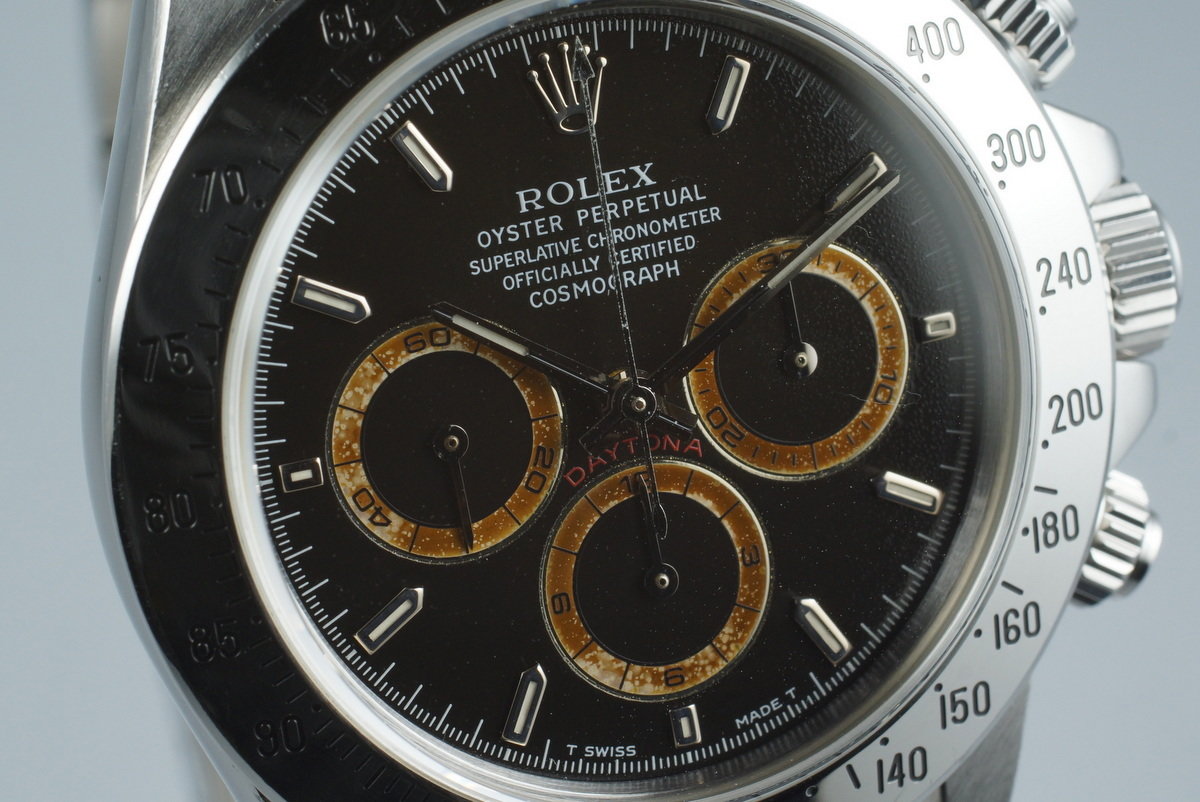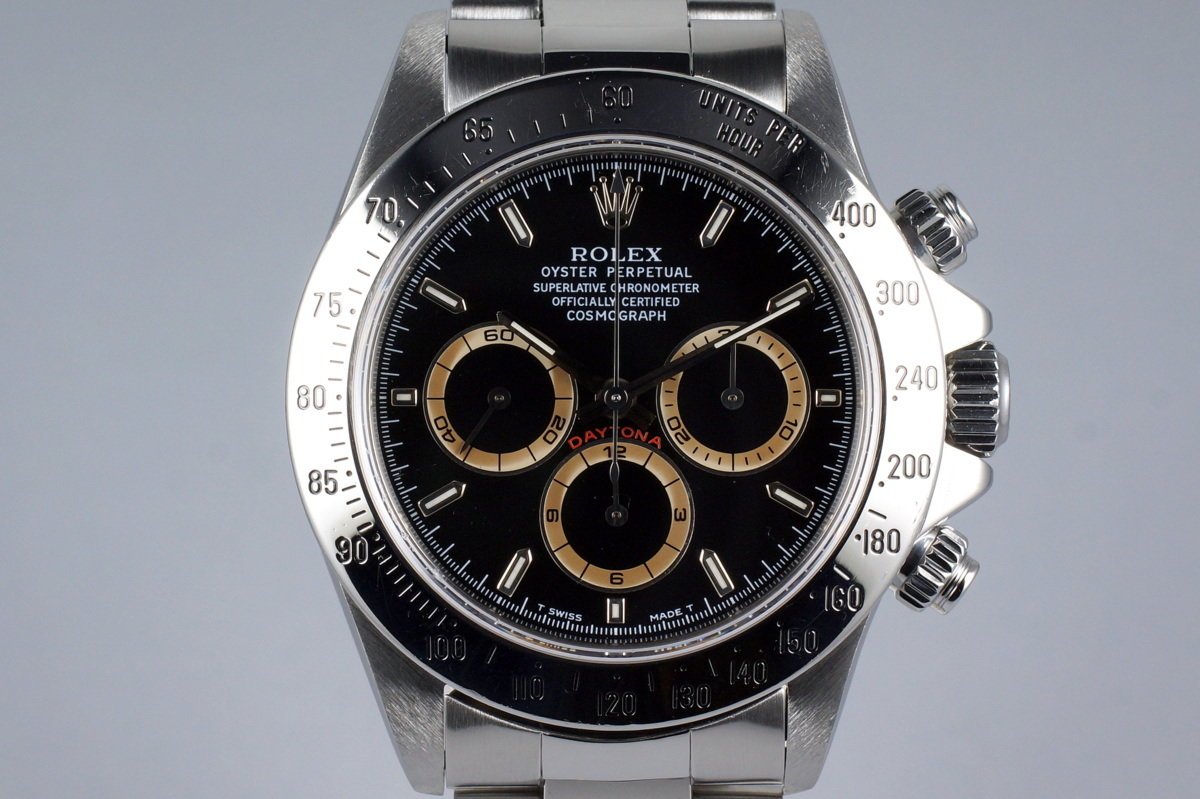
What is a Rolex Patrizzi Dial?
The world of vintage Rolex watches is full of terms, words, and nicknames. For a novice collector, all these terms can be overwhelming. In fact, it can sometimes be difficult to keep track of them all for even the most experienced.
One of these vintage Rolex watch terms that you may come across when studying Rolex watches is ”Patrizzi dial”
What is a Patrizzi dial?
Patrizzi dial refers to a particular dial type that only exists on some Rolex Daytonas reference 16520, also known as ”Zenith Daytona”.
A Patrizzi dial is actually a sign of aging – patina- on the dial, and more specifically, it is when the counters turn brown. The counters of the Rolex Daytona 16520 are originally black from the factory. Rolex used Zapon, which is an organic varnish, for the dial, and it would later prove that some models were not protected enough, which over time led to them turning brown. This is when the silver outer tracks of the sub-dials oxidize.

But not all of the Daytona 16520 gets this aging. In fact, the 16520 has five ”marks” – dial iterations with large or small differences between them. It is only one of those generations of the dials that would prove to become Patrizzi dials – making it very rare. In fact, only the black dial gets aging on the counters, and these dials that do turn into Patrizzi dials are Mark IVs which were made between 1994 and 1995.

It is this patina and aging process that creates a ”Patrizzi dial”. How did the name Patrizzi come up? The Daytona dial is named after Mr. Osvaldo Patrizzi, who is an Italian auctioneer and founder of Antiquorum, which is now one of the top auction houses specializing in watches.
Patrizzi was the first to discover this unique aging of the counters back in 2005 when he was selling a 16520 at auction and identified the patina on the counters.
The Patrizzi dial Daytonas fetch huge sums on the secondhand market. In fact substantially higher amounts than the exact same black Daytona but without the aging of the dial.
The aging process of the sub-dials will only continue over the years, which means you can see many different versions of the Patrizzi dial depending on how and where they are used.
Due to the short production period of the Patrizzi dial Daytona, it has become a sought-after watch by collectors. To most, a dial defect like this (because to be frank, that is exactly what it is), would remove the appeal of the watch. But for collectors and enthusiasts, it is the opposite. It is ”mistakes” like this by Rolex that makes for some of the most sought-after collector’s pieces further on.
Other examples of dial color defects include the Explorer II 16550 ”cream dial”, whose white dial color proved to turn into a cream color. Of course not the intention of Rolex, but the result was a sought-after and popular collector’s watch.




